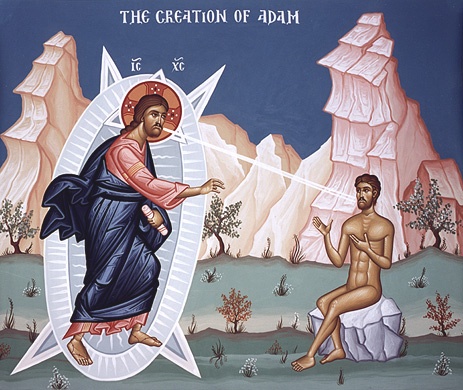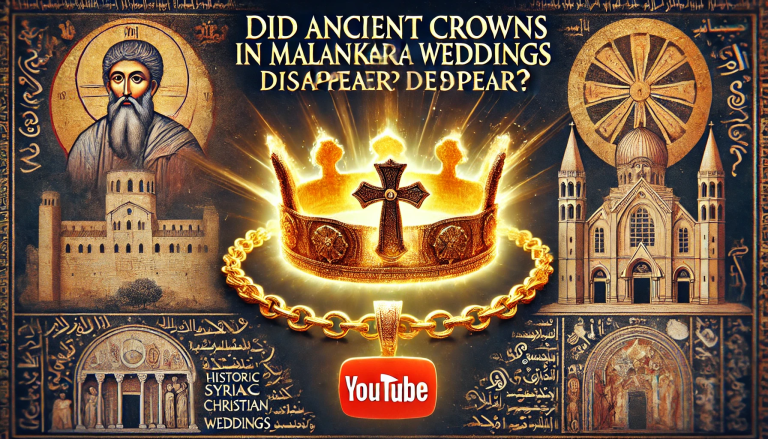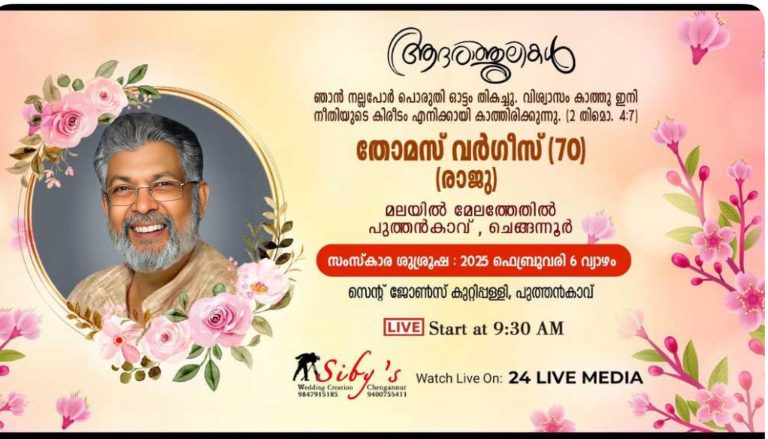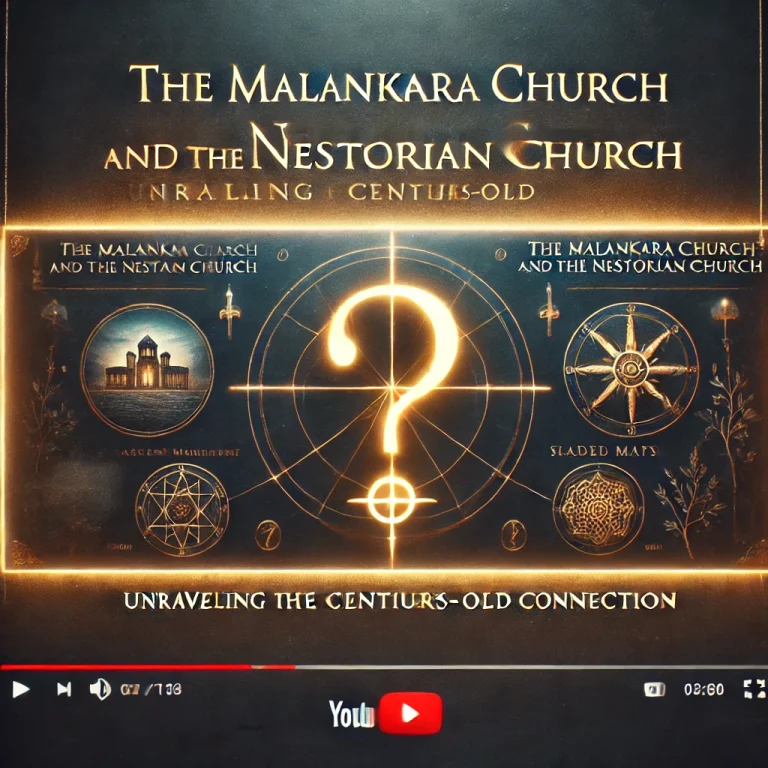
Theosis, Orthodox Christianity, refers to the process of becoming united with God or attaining likeness to God, often described as divinization.
The concept holds that the true purpose of human life is to participate in God’s divine nature and to be transformed by His grace and love, becoming partakers of the divine life.
Key Aspects of Theosis
1. The idea of Union with God in the context of Theosis is profound and central to understanding the purpose and destiny of human life. It expresses the vision that the ultimate aim of every person is not to dissolve into God in a way that erases individuality but to engage in a deep and transformative communion with the divine. Here’s a deeper look at the nuances of this concept:
1. Fulfilling One’s Potential: Theosis teaches that humans are created in the imago Dei—the image of God. However, this image is often clouded or marred by sin and the fallen state of the world. Through the process of Theosis, individuals are invited to restore and perfect this image. The journey toward Theosis is about realizing the fullness of what it means to be human, drawing out and elevating the divine potential within each person while preserving their unique identity.
2. Transcending Limitations: The limitations of human nature, such as suffering, sin, and mortality, are seen as aspects of existence that can be transcended through divine grace. As one grows in communion with God, the transformative work of grace enables a person to rise above these limitations, drawing closer to the eternal and unchanging nature of God. Yet, this transcendence is not a rejection of the human condition but a fulfillment of it. Human beings become “gods by grace” while remaining created beings, distinct from God who is uncreated.
3. Personal Communion and Love: Union with God is deeply relational. It’s not an abstract or impersonal merging with the divine but rather a loving relationship built on mutual giving and love. God invites each person into a personal and intimate relationship, where their individual gifts, personality, and experiences are transformed and glorified. This relational aspect highlights that each person’s journey toward Theosis is unique, yet all are called to a shared destiny of divine union.
4. Example of the Saints: The lives of the saints offer glimpses into what this union with God looks like. Saints are often described as radiant with divine light, embodying the virtues of love, humility, and holiness. Yet, each saint retains their distinct personality and vocation. Their transformed lives show that Theosis leads to a deeper expression of one’s true self, refined and made luminous by God’s grace.
Union with God in Theosis is about participating fully in the divine life while embracing the richness of one’s individuality. It’s an invitation to a sacred partnership where humans become more fully themselves, perfected in love and holiness, reflecting the beauty and image of God in their own unique way. This fulfillment of human potential reveals that true individuality is not lost in God but rather finds its deepest meaning and purpose through divine communion.
2. The concept of Healing and Transformation in Theosis addresses humanity’s deep spiritual wounds and the brokenness caused by sin. It teaches that every human being, while created in the image of God, bears the effects of sin, which separate us from God and distort our true nature. The process of Theosis focuses on spiritual restoration, enabling individuals to be healed and transformed by God’s grace. Here’s how this transformative healing unfolds:
1. Humanity’s Broken State
• Effects of Sin: Sin, in the Christian understanding, is not only individual wrongdoings but a condition that leads to spiritual and existential separation from God. This separation brings about disorder, suffering, and death, impacting both the soul and the physical world. It leaves humanity in a state of spiritual sickness, in need of divine healing and restoration.
• Loss of Original Purity: Humanity was created in purity and holiness, intended to live in harmony with God, creation, and one another. Sin disrupted this original state, causing a loss of innocence and a tendency toward selfishness and disharmony.
2. The Transformative Power of Grace
• God’s Grace as the Healer: Healing in Theosis is not something humans can achieve on their own; it requires the active presence of God’s grace. Grace is the uncreated energy of God, a gift that brings spiritual and moral healing. Through grace, God cleanses and transforms the soul, restoring it to the original beauty for which it was created.
• Purification and Illumination: The healing process often begins with purification, where individuals work, with God’s help, to cleanse their hearts of passions and sin. This purification prepares the way for illumination, where a person begins to experience divine light and wisdom, gaining deeper understanding and intimacy with God.
3. Restoration to Original Holiness
• A Journey Back to God’s Design: Theosis is often likened to a journey of healing, where individuals are gradually restored to their original state of holiness and purity. This means becoming more loving, humble, and virtuous, resembling Christ in thought, word, and deed. The goal is not just moral improvement but a fundamental transformation that touches every aspect of a person’s being.
• Sanctification of the Whole Person: Theosis emphasizes that healing involves both the soul and the body. It looks forward to the ultimate resurrection, where the body will be transformed and glorified. In this life, healing can be experienced through spiritual practices like confession, prayer, and the sacraments, which bring the grace of God into a person’s life.
4. Examples of Healing in Christian Tradition
• Stories of Redemption: The lives of saints and spiritual figures in Christian history often illustrate this healing journey. People who once lived in sin or despair found new life and transformation through God’s grace. These stories provide hope and show that no one is beyond the reach of God’s love and healing power.
• Miracles of Healing: Throughout Christian history, there have been accounts of miraculous healings—physical and spiritual—that bear witness to God’s ongoing work in the world. These miracles are seen as signs of the deeper spiritual healing that Theosis promises to every believer.
Healing and Transformation in Theosis are about overcoming the spiritual wounds caused by sin and being restored to the fullness of life that God intended. It is a process marked by grace, where God works within the human heart to cleanse, renew, and sanctify. This healing journey leads believers toward greater holiness and purity, helping them reflect God’s love and light in a broken world. Ultimately, Theosis promises that, through God’s grace, humanity can be made whole again, living in harmony with the divine will and radiating the original beauty of God’s creation.
3. The concept of Grace and Free Will in Theosis emphasizes that the journey toward union with God is a collaborative and dynamic process. It recognizes the vital role of both divine grace and human cooperation in achieving spiritual transformation. Here is an in-depth exploration of this synergy:
1. The Role of God’s Grace
• Divine Initiative: The journey of Theosis begins with God. Grace is understood as God’s uncreated energy, a gift freely given that invites, empowers, and sustains human beings on their path to union with Him. This grace is unconditional and ever-present, drawing people closer to the divine life.
• Grace as Transformative Power: God’s grace works to heal, enlighten, and sanctify the soul. It is a supernatural help that elevates human nature, making it possible for humans to participate in God’s divine life. Without God’s grace, the process of Theosis would be impossible, as human beings are incapable of transforming themselves by their own efforts.
2. The Necessity of Human Free Will
• Human Cooperation: Theosis is not a passive process; it requires the active participation of each individual. While God’s grace initiates and sustains the journey, humans must respond willingly, making conscious choices to align themselves with God’s will. This includes engaging in spiritual practices like prayer, fasting, repentance, and acts of love.
• Freedom to Choose: God respects human freedom and never forces anyone into union with Him. Theosis involves the exercise of free will, where individuals freely choose to cooperate with God’s grace. This cooperation is a sign of genuine love and faith, as love must be given freely to be authentic.
3. Synergy in Spiritual Growth
• The Concept of Synergy: In Orthodox theology, synergy refers to the cooperation between divine grace and human effort. It’s a mysterious partnership where both God and the individual work together. God provides the strength and guidance, while the person actively strives to live a holy life. This synergy ensures that Theosis is neither an act of God alone nor a product of human striving alone but a harmonious blend of both.
• Examples of Synergistic Practices:
• Prayer: In prayer, humans open their hearts to God, and His grace fills them, leading to greater spiritual insight and strength.
• Sacraments: Participation in sacraments like the Eucharist is an act of human will, but the transformation that occurs is a work of God’s grace.
• Acts of Love and Virtue: Choosing to love and serve others requires human effort, yet it is God’s grace that enables and sanctifies these actions.
4. The Balance Between Grace and Effort
• Avoiding Extremes: The teaching on grace and free will avoids two extremes: Pelagianism, which emphasizes human effort without recognizing the necessity of grace, and determinism, which negates human free will and suggests that salvation is entirely God’s doing without human input. Theosis strikes a balance, affirming that while humans cannot save themselves, they must actively participate in God’s saving work.
• A Lifelong Process: The cooperation between grace and free will is ongoing throughout a person’s life. Every step toward God involves a new act of grace and a corresponding human response. Even when individuals stumble, God’s grace remains present, inviting them to repent and continue the journey.
5. Living Out the Synergy
• Daily Commitment: Theosis requires a daily commitment to align one’s life with God’s will. This means making choices that reflect God’s love and holiness, even in the face of challenges. It also means humbly acknowledging one’s dependence on God and continually seeking His help.
• The Joy of Cooperation: There is a profound joy and sense of fulfillment in cooperating with God. As humans freely choose to love and serve God, they experience the deep peace and purpose that comes from living in harmony with divine grace.
Grace and Free Will in Theosis reflect a beautiful and dynamic relationship between God and humanity. God’s grace is the foundation and driving force of Theosis, offering healing, strength, and enlightenment. Yet, human beings are called to actively respond to this grace with faith, love, and intentional actions. This synergy reveals the true nature of a loving relationship: one in which God and human beings work together, leading to the ultimate goal of divine union and spiritual transformation. Theosis is thus a journey that celebrates both divine generosity and human freedom, unfolding in a partnership of love and grace.
4. The concept of Christ as the Model in Theosis is central to understanding how the divine-human relationship is both initiated and perfected. Jesus Christ serves as the ultimate example and source of divine life, demonstrating that through His incarnation, death, and resurrection, humanity is invited into a transformative relationship with God. Here is an in-depth look at how Christ embodies and makes Theosis possible:
1. The Incarnation: God Becomes Man
• Union of Divinity and Humanity: In the mystery of the Incarnation, Jesus Christ, who is fully God, became fully human without ceasing to be divine. This union of God and humanity in the person of Christ is the foundation of Theosis. By taking on human nature, Christ sanctified it, making it possible for humans to share in God’s divine life.
• Restoration of Human Nature: Through His Incarnation, Christ healed the separation between God and humanity caused by sin. He restored human nature to its original dignity and opened the way for all people to become partakers of the divine nature. This act is seen as the ultimate demonstration of God’s love and desire for union with His creation.
2. Christ’s Life as a Model for Theosis
• A Life of Perfect Virtue: Jesus lived a life of perfect love, humility, and obedience to God the Father. His teachings, actions, and relationships with others exemplify what it means to live in complete harmony with God’s will. By imitating Christ’s virtues, believers are drawn closer to the divine life.
• Humility and Sacrifice: The humility of Christ, shown in His willingness to suffer and die for humanity, serves as a model for self-emptying (kenosis) and sacrificial love. This path of humility and self-giving is essential for Theosis, as it transforms believers into the likeness of God, who is love.
3. Participation in the Divine Life Through Christ
• Sacraments as Means of Grace: The sacraments are viewed as essential means by which believers participate in the divine life of Christ. The Eucharist, for example, is a direct encounter with the Body and Blood of Christ, nourishing the soul and uniting believers with His divinity. Baptism initiates this union, cleansing believers from sin and marking the beginning of the journey toward Theosis.
• Prayer and Communion with Christ: Prayer is a vital practice for maintaining and deepening the relationship with Christ. Through prayer, believers open their hearts to God’s presence and are transformed by His grace. In both personal and communal prayer, they are called to emulate Christ’s constant communion with the Father.
• Living a Life of Virtue: The call to holiness involves following Christ’s example in daily life. This means loving one’s neighbors, forgiving enemies, and practicing compassion, humility, and patience. By striving to embody these virtues, believers reflect Christ’s divine image and grow in spiritual maturity.
4. Christ’s Death and Resurrection: The Path to New Life
• Victory Over Sin and Death: The death and resurrection of Christ are the culmination of His saving work. By dying on the cross, Christ defeated the power of sin and death, offering the hope of eternal life. His resurrection is a promise that all who follow Him will also be raised to new life, both spiritually and physically, in the fullness of time.
• Participation in the Paschal Mystery: Believers are invited to participate in Christ’s suffering and resurrection through a life of repentance, self-denial, and spiritual renewal. This participation is not merely symbolic but a real, transformative process that leads to a deeper union with God. The cross becomes the means of Theosis, as believers die to sin and are raised to divine life.
5. The Transfiguration: A Glimpse of Theosis
• The Mount of Transfiguration: In the event of the Transfiguration, Jesus revealed His divine glory to His disciples, giving them a foretaste of the divine life that awaits those who follow Him. This moment shows that Theosis is not a future hope alone but something that can be experienced in part even in this life. It also emphasizes the goal of becoming radiant with divine light, as Christ was on the mountain.
6. Christ’s Ongoing Presence in the Church
• The Body of Christ: The Church is often described as the Body of Christ, where believers continue to experience His presence and grace. Through the Church’s teachings, liturgy, and community, Christians are continually reminded of their call to Theosis and are supported in their spiritual journey.
• Guidance of the Holy Spirit: Christ sent the Holy Spirit to guide and empower believers, making Theosis possible. The Spirit works within each person, conforming them to the image of Christ and enabling them to live a life of holiness.
Christ as the Model in Theosis emphasizes that Jesus is both the way and the example for divine union. By becoming human, Christ made Theosis possible, and by living a life of perfect virtue and self-giving love, He showed the path that believers must follow. Through participation in the sacraments, a life of prayer, and the practice of virtue, Christians are invited to imitate Christ and share in His divine life. Theosis is a journey made possible only through Christ, who unites humanity with God and transforms it into a reflection of divine glory.
5. The Practical Path of Theosis outlines the specific spiritual practices and lifestyle commitments that believers are called to embrace in order to grow in union with God. This journey is not a one-time event but a continuous, lifelong process of transformation, requiring dedication and a sincere desire to reflect the divine image. Here’s an exploration of how this practical path unfolds:
1. Repentance: The Beginning of Transformation
• Metanoia (Change of Mind and Heart): The journey of Theosis begins and continues with metanoia, a Greek term meaning repentance or a complete change of heart and mind. It is a reorientation of one’s entire being toward God and away from sin. Repentance is more than feeling remorse; it is a genuine commitment to spiritual renewal and living a life aligned with God’s will.
• Confession and Forgiveness: Regular confession is an important practice in the path of Theosis. By acknowledging sins and receiving God’s forgiveness, believers experience healing and are empowered to overcome sinful habits. The sacrament of confession is a means of divine grace that purifies the soul and fosters spiritual growth.
2. Prayer: Communion with God
• Daily Prayer: Prayer is the lifeblood of the journey toward Theosis. It is through prayer that believers maintain a living connection with God, inviting His grace and presence into every aspect of their lives. Prayer can take many forms, including the Jesus Prayer (“Lord Jesus Christ, Son of God, have mercy on me, a sinner”), which is a simple yet powerful way to continually call upon God’s mercy.
• Liturgical Prayer: Participation in the Church’s liturgical life, especially the Divine Liturgy, is essential. The communal prayers of the Church draw believers together in worship and adoration of God, fostering a deeper sense of unity and holiness.
• Contemplative Prayer: As believers advance in spiritual maturity, they may engage in contemplative or silent prayer, seeking to be still in God’s presence and to experience His divine light. This practice purifies the heart and draws the soul closer to God.
3. Participation in the Sacraments: Means of Grace
• The Eucharist (Holy Communion): The Eucharist is considered the “source and summit” of Christian life. Through the Body and Blood of Christ, believers receive divine life and are united more deeply with God and the Church. Regular participation in the Eucharist nourishes the soul and provides the grace needed to continue the journey of Theosis.
• Baptism and Chrismation: Baptism marks the beginning of the Theosis journey, washing away original sin and making one a new creation in Christ. Chrismation, which often follows Baptism, is the anointing with holy oil, symbolizing the gift of the Holy Spirit and the beginning of a Spirit-filled life.
• Other Sacraments: Sacraments such as Marriage, Holy Orders, and Anointing of the Sick each play a role in sanctifying different aspects of a person’s life, making them opportunities for deeper communion with God and a means of ongoing transformation.
4. Living a Life of Love and Humility
• The Greatest Commandment: Jesus taught that love is the greatest commandment: loving God with all one’s heart, soul, and mind and loving one’s neighbor as oneself. Theosis requires a lifestyle of active love, where believers are called to practice kindness, charity, and selflessness. This love is not merely an emotion but a way of being that reflects God’s own self-giving love.
• Humility as the Foundation: Humility is crucial for spiritual growth. It means recognizing one’s dependence on God and valuing others above oneself. Christ’s example of humble service, even unto death, is the model that believers are called to imitate. Humility purifies the soul of pride and opens it to the workings of God’s grace.
5. Fasting and Self-Discipline
• Spiritual Discipline: Fasting is a traditional practice in the path of Theosis, serving as a means of self-discipline and spiritual focus. By voluntarily abstaining from certain foods and pleasures, believers learn to control their desires and prioritize spiritual nourishment over physical satisfaction. Fasting is not an end in itself but a tool to purify the soul and grow in self-mastery.
• Almsgiving and Charity: Alongside fasting, acts of charity and service to the poor are essential. These practices help believers detach from material possessions and develop a heart of compassion. Serving others is a concrete way to live out Christ’s commandment of love and to reflect God’s generosity.
6. The Role of Spiritual Guidance
• Spiritual Fathers and Mothers: On the path of Theosis, spiritual guidance is invaluable. Spiritual fathers and mothers, often experienced monks, nuns, or clergy, offer wisdom and support to those seeking a deeper relationship with God. They help discern God’s will and provide encouragement in overcoming spiritual struggles.
• Community Support: The Christian journey is not meant to be traveled alone. The support of the Church community is essential, as it provides accountability, fellowship, and shared worship. The communal aspect of Theosis reflects the unity and love that God desires for His people.
7. Purification of the Soul
• Overcoming Passions: The soul must be purified from passions, which are disordered desires that lead away from God. This purification involves a process of inner healing, where believers confront their weaknesses and allow God’s grace to transform them. Through ascetic practices, prayer, and grace, the passions are brought into harmony with the divine will.
• Growth in Virtue: The ultimate goal of purification is to develop Christ-like virtues: patience, faith, courage, gentleness, and more. Each virtue cultivated helps draw the soul closer to God and reflects His image more clearly in the believer’s life.
The Practical Path of Theosis involves a holistic approach to spiritual life, integrating repentance, prayer, sacramental participation, and virtuous living. It’s a lifelong journey of purification and transformation, where believers actively cooperate with God’s grace to become more like Christ. Through daily acts of love and humility, discipline, and a commitment to spiritual practices, the soul is gradually sanctified and brought closer to divine union. Theosis is a continuous ascent toward God, marked by perseverance, faith, and the ever-deepening presence of His divine life in the believer’s heart.
The Theological Background of Theosis is deeply rooted in the teachings and writings of the early Church Fathers, who articulated this profound concept as the ultimate purpose of human life. Theosis, also known as divinization or deification, is not a peripheral idea but a central tenet of Christian theology, especially in Eastern Orthodox tradition. Let’s explore the theological foundations that give shape to this transformative doctrine.
1. Biblical Foundations of Theosis
• Scriptural Basis: Theosis is supported by key biblical passages that emphasize the call to become partakers of the divine nature. For instance, 2 Peter 1:4 states, “He has given us His very great and precious promises, so that through them you may participate in the divine nature, having escaped the corruption in the world caused by evil desires.” Additionally, passages like John 17:21–23, where Jesus prays for believers to be united with God as He is united with the Father, underscore the goal of divine union.
• The Image and Likeness of God: The concept of Theosis is also connected to the creation narrative in Genesis, where humanity is described as made in the image and likeness of God (Genesis 1:26–27). The Church Fathers saw Theosis as the fulfillment of this divine image, where humans are called to grow into the likeness of God through grace and spiritual transformation.
2. Teachings of the Church Fathers
• St. Athanasius of Alexandria: St. Athanasius is one of the most influential proponents of Theosis. He famously articulated, “God became man so that man might become god,” emphasizing that the Incarnation of Christ is the means by which humanity is invited into divine life. This statement captures the essence of Theosis: the idea that Christ’s becoming human makes it possible for humans to be divinized.
• St. Irenaeus of Lyons: St. Irenaeus also contributed to the understanding of Theosis. He taught that the Word of God became flesh to elevate humanity and to restore it to communion with God. He emphasized that Christ recapitulated (or summed up) human history, undoing the effects of Adam’s sin and leading humanity back to divine intimacy.
• St. Gregory of Nazianzus: Another influential Church Father, St. Gregory of Nazianzus, spoke of Theosis as the ultimate goal of salvation. He emphasized that through Christ, human nature has been united with divinity, and believers are called to partake in this union through spiritual and moral transformation.
• St. Maximus the Confessor: St. Maximus further developed the theology of Theosis by explaining that Christ’s Incarnation enables humans to be united with God’s divine energies (His active presence) while remaining distinct from His essence (His ultimate being). He taught that the human will must align with God’s will, leading to a harmonious participation in divine life.
3. The Doctrine of the Incarnation
• God’s Condescension: Theosis is made possible through the Incarnation, where God humbled Himself and became man in the person of Jesus Christ. This act of divine condescension bridges the infinite gap between God and humanity. By assuming human nature, Christ transformed and sanctified it, making it possible for all humans to share in God’s divine life. This is not to suggest that humans become divine in essence but that they are elevated to share in God’s energies and holiness.
• Restoration and Redemption: The fall of humanity introduced sin and death, causing separation from God. Theosis teaches that through Christ’s redemptive work—His life, death, and resurrection—humanity is offered the chance to be healed, redeemed, and restored to its original purpose: communion with God.
4. The Distinction Between God’s Essence and Energies
• Essence and Energies: The theology of Theosis relies on the distinction between God’s essence and His energies, as articulated by St. Gregory Palamas in the 14th century. God’s essence refers to His innermost being, which is transcendent and unknowable, while His energies are the ways in which He manifests and communicates Himself to creation. Through Theosis, believers participate in God’s energies, experiencing His love, grace, and presence without becoming part of His essence.
• Participating in Divine Life: This distinction allows believers to experience and be transformed by God while still remaining distinct from Him. Theosis, therefore, is a mystical union with God where His divine life flows into human nature, sanctifying and glorifying it.
5. The Purpose of Human Creation
• Human Destiny: The Church Fathers taught that humanity was created with the ultimate purpose of union with God. This divine calling is part of the reason humans are made in God’s image. Theosis is the fulfillment of human nature, a destiny that reveals the full potential and glory for which humanity was intended. This process restores and even elevates humanity beyond the original state experienced by Adam and Eve.
• A Journey of Transformation: Theosis is not an automatic or instantaneous event but a journey of transformation that requires active cooperation with God’s grace. It involves a life of prayer, sacramental participation, repentance, and the cultivation of virtues. The more a person becomes like God in love and holiness, the more they fulfill their ultimate purpose.
6. Theosis and the Trinity
• Union with the Triune God: Theosis emphasizes the believer’s union with the Triune God—Father, Son, and Holy Spirit. This union is deeply relational, mirroring the love and communion shared within the Trinity. By participating in the life of the Trinity, believers experience the fullness of divine love and are drawn into a community of divine and human fellowship.
The Theological Background of Theosis reveals that it is a core element of Christian soteriology (the study of salvation), especially within the Eastern Orthodox tradition. Rooted in the teachings of the Church Fathers and the doctrine of the Incarnation, Theosis describes humanity’s ultimate destiny: to become partakers of the divine nature, healed and transformed by God’s grace. It affirms that salvation is not just the forgiveness of sins but a profound participation in God’s life, bringing human beings to the fullest realization of their divine calling. This journey toward divinization is both a gift of grace and a response of love, leading to eternal communion with God.
Summary
Theosis is the teaching that the true purpose of human life is to seek union with God and to be transformed into His likeness. This transformative journey is one of love, virtue, and grace, involving a continuous effort to become more like God. Theosis emphasizes that human beings, created in the image of God, are called to share in His divine nature through the healing and sanctifying work of Christ. By participating in the sacraments, living a life of prayer, repentance, humility, and active love, believers grow closer to God. This journey does not erase individuality but fulfills each person’s true potential, allowing them to reflect God’s holiness and be embraced by His divine presence. In essence, Theosis offers the vision of humanity’s ultimate destiny: to dwell in eternal communion with God, transformed by His grace into a reflection of divine beauty and love.




